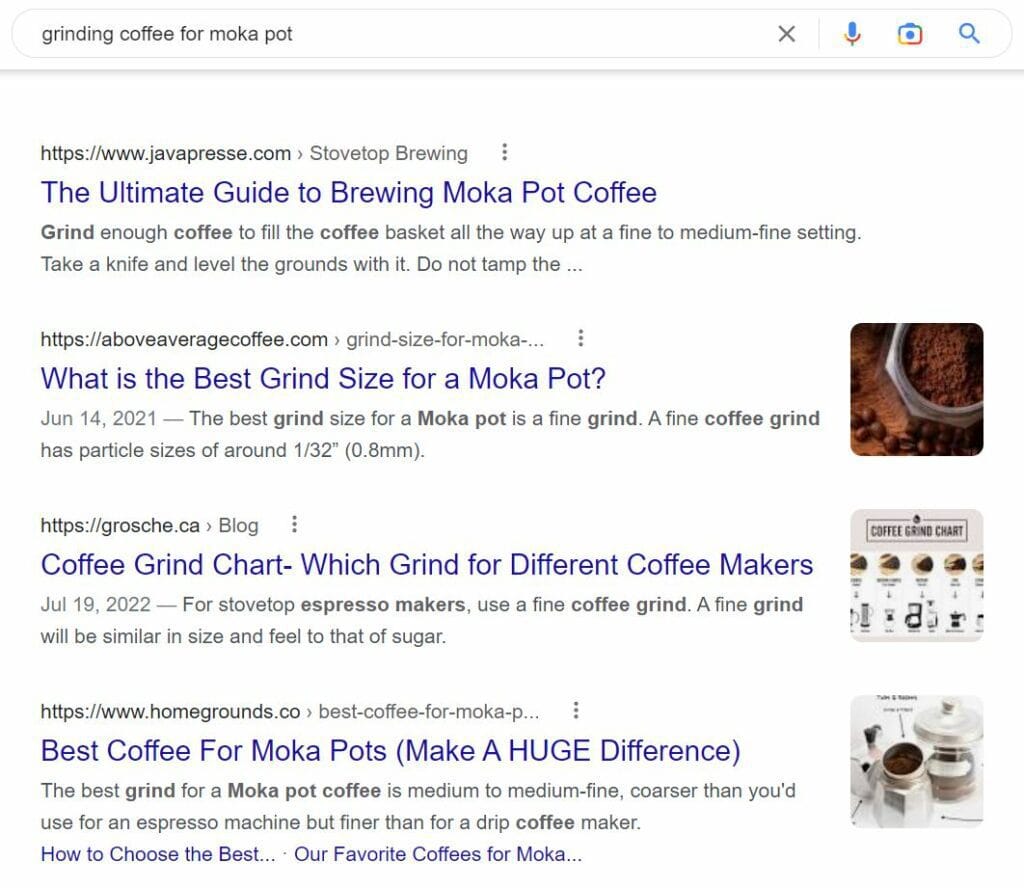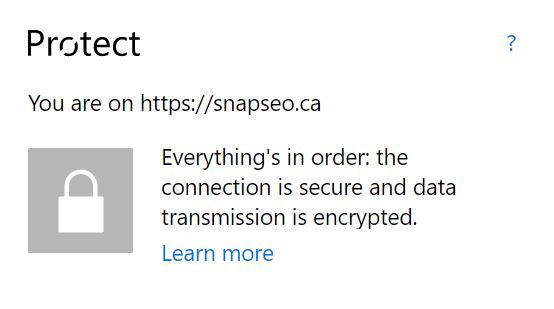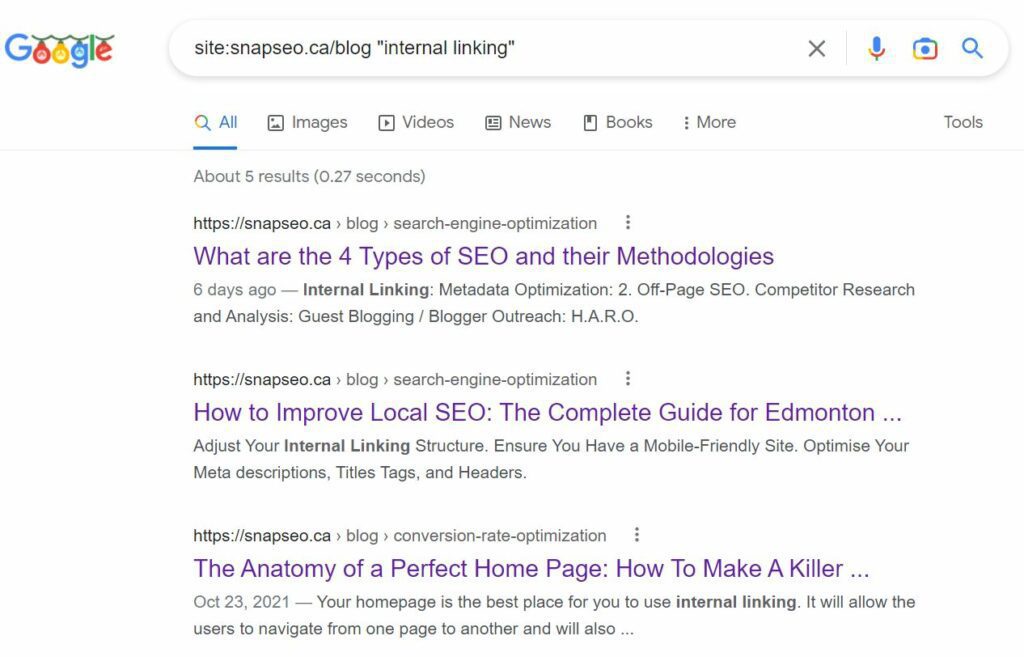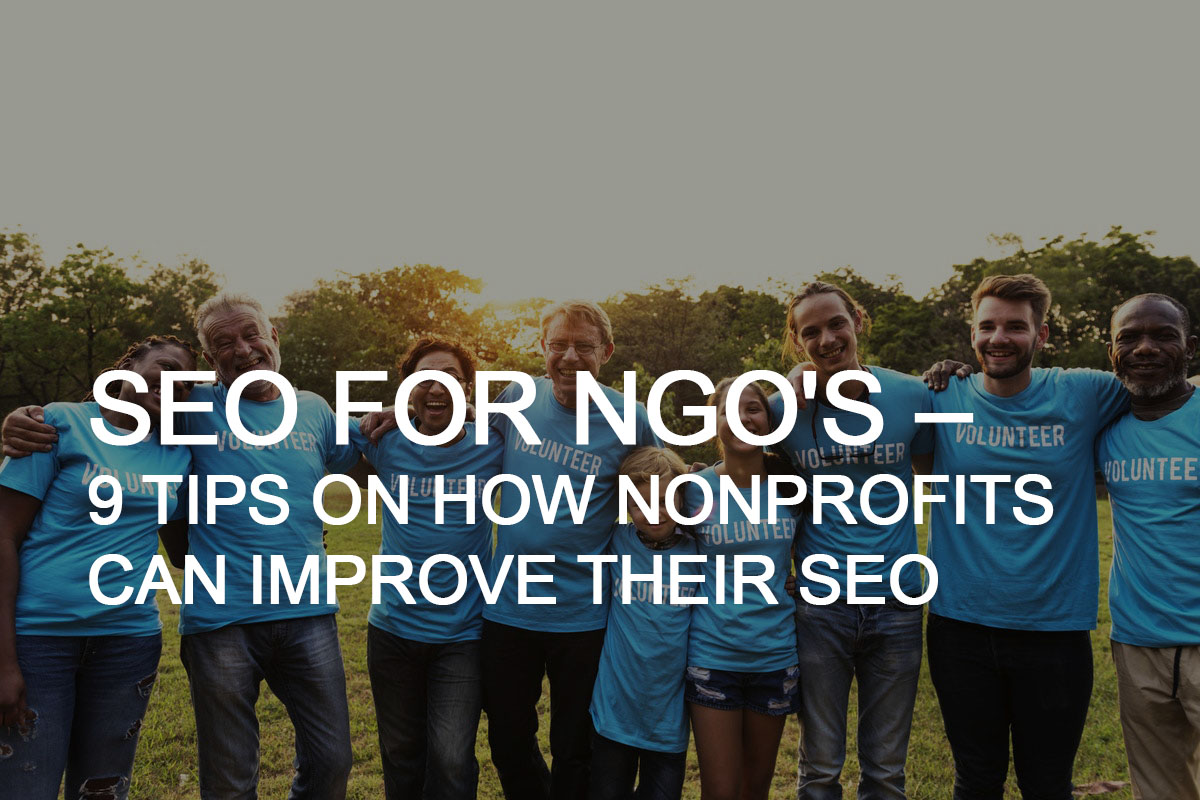Welcome to this SEO tutorial! Search engine optimization (SEO) is the process of improving the visibility and ranking of a website in search engine results pages. By optimizing your site to be search engine friendly, you’ll increase the odds that your site will be discovered by users who are looking for products or services you provide. In this SEO tutorial, we’ll cover the fundamentals of SEO and look at some of the essential strategies and methods that can be used to increase your website’s position in search results. Whether you’re just starting out or an expert SEO specialist, this guide will give you the skills and knowledge you require to optimize your site for search engines and bring the right traffic to your website.
Let’s get started!
Keyword Research
Keyword research is a vital part of SEO. It involves identifying the keywords and phrases your targeted users use to find the items or services your website provides. Incorporating these keywords into your site’s content will increase its visibility and rank on the search engine results pages.
There are many SEO tools and methods that you can use to do keyword research:
- Google AdWords Keyword Planner: This is a free service provided by Google that lets you search for a phrase or keyword and then see how many people search for it in a month, in addition to related keywords and the volume of their searches.
- Google Suggest: When you begin typing an inquiry into Google, it will suggest similar searches that other users have used. These suggestions could help you decide on the search terms to choose.
- Google Trends: This tool lets you compare the search volume of various keywords over time, allowing you to identify patterns and seasonal variations in search volumes.
- Competitor analysis: By analyzing the keywords your competitors are ranking for, you can get an idea of the keywords you should target.
Once you have identified a list of relevant keywords, you should prioritize them based on their relevance, search volume, and competition. You can then use these keywords in your website’s content, meta tags, and headings to improve its ranking in search results.
It is important to note that keyword research is an ongoing process, as the search habits of your target audience may change over time. It is a good idea to regularly review and update your keyword list to ensure that it remains relevant and practical.
Keyword Evolution: Frequency of Revisiting Keyword Research
Keyword research should be an ongoing process because the digital landscape is constantly evolving. The frequency of revisiting keyword research can depend on several factors, including industry dynamics, seasonal trends, and changes in consumer behavior. A good practice is to review and update your keyword strategy:
- Quarterly: At a minimum, to capture any significant shifts in market trends or consumer interests.
- During Major Industry Changes: Whenever there are significant changes in your industry, such as new products, technologies, or regulations.
- After Performance Reviews: If your content performance analytics indicate a change in what users are searching for or engaging with.
- Seasonally: For businesses affected by seasonal trends, adjusting keywords to match seasonal search behaviors is crucial.
By staying on top of these changes, you can ensure that your content remains relevant and continues to attract the right audience.
Content Quality vs. Quantity: Balancing Keyword Inclusion and Risks
Balancing keyword inclusion with the risk of keyword stuffing is crucial for SEO and user experience. Here are some strategies to maintain this balance:
- Focus on User Intent: Understand the intent behind the keywords and create content that addresses the needs and questions of your audience.
- Natural Inclusion: Incorporate keywords in a way that reads naturally. If a keyword doesn’t fit seamlessly into the content, it’s likely to be seen as stuffing.
- Use Synonyms and Related Terms: This not only avoids repetition but also helps to rank for a broader range of search queries.
- Quality Over Quantity: Always prioritize the creation of valuable, informative content over trying to include as many keywords as possible.
- Monitor Keyword Density: Keep an eye on the percentage of times a keyword appears in the text and ensure it stays within a reasonable range (usually 1-2% is suggested).
By focusing on creating valuable content for users, you naturally integrate keywords without overdoing it, which is the key to avoiding keyword stuffing.
Mobile Optimization: Critical Aspects of Mobile UX Impacting SEO
With mobile-first indexing, the following aspects of mobile UX are critical for SEO:
- Responsive Design: Ensure your site is usable and visually appealing across a variety of mobile devices.
- Loading Speed: Mobile users expect fast loading times. Optimize images, leverage browser caching, and minimize code to improve speed.
- Ease of Navigation: Mobile screens are smaller, so it’s essential to have a simple, intuitive navigation structure.
- Clickable Elements: Buttons and links should be easy to click on a small screen, meaning they should be appropriately sized and spaced.
- Readability: Text should be easily readable on mobile devices without needing to zoom in.
- Avoiding Pop-Ups: Intrusive pop-ups can be frustrating on mobile devices and may lead to higher bounce rates.
- Local SEO: Mobile users often search for local information, so ensure your local SEO is on point with accurate location details and local keywords.
By optimizing these elements, you can significantly improve the mobile user experience, which is a key factor in SEO performance and ranking.
Create Relevant Content
Producing relevant, optimized and helpful content is essential to the SEO process. By creating relevant and high-quality written content with targeted keywords, you can increase the visibility of your website and its position on search engine result pages.
Here are some suggestions to follow when creating content that is optimized:
- Determine your audience’s needs: Before you begin writing, it’s important to know who you’re trying to reach through your content. This will enable you to create content resonating with your readers and addresses your audience’s needs and desires.
- Do keyword research: If you have yet to do so, find the words and phrases your intended users use to find the items or services your business provides. Add these keywords within your content to aid search engines in comprehending the importance and content of your site.
- Write high-quality content: Be sure your content is helpful, informative and entertaining. Use clear and concise language and break your content into smaller pieces to make it easier to read. It is now crucial to prove that you are not just an expert in your field but also that you have first-hand knowledge.
- Use header tags: Use header tags (H1, H2, H3, etc.) to organize your content and allow users and search engines to recognize the hierarchy of your website. Utilize the keywords you want to use in header tags but beware of keyword filling. People like to skim through articles to find the article’s main points. Your headers must tell an overall story of your content simply by skimming.
- Use internal and external links: Link to other pages on your site and external sources to give more context and benefit to your visitors. It can also increase the perceived authority and credibility of your site.
- Optimize your images: Use keywords-rich, descriptive and descriptive file names for your images. Also, include alt text that describes the content of your images to search engines.
With these suggestions by following these tips, you can develop optimized content that can improve the visibility of your website and rank in the results of a search. We have seen that the more relevant content is to a user’s investigation, the better it will rank.
Craft Compelling yet well-optimized titles
Having compelling and optimized titles is a crucial aspect of SEO and conversion rate optimization. The title is the text that appears on search engine ranking pages and can be among the first things people look at when they search for a specific term. This is your first opportunity to make a sale and sell the click. Therefore, it is crucial to design titles that are designed to be optimized by search engines as well as attractive to users.
Here are some suggestions for creating compelling and optimized titles:
- From your keyword research, use relevant keywords: Choose keywords that your users are searching for to find the products or services your site provides. This helps search engines recognize the significance of your site and boost its position within search result pages.
- Make it clear: Look for a title at least 60 characters long in length since this is usually the maximum length shown in the results of a search.
- Create a compelling message: Make it clear by using descriptive and actionable language that conveys the value of your site and encourages users to visit it.
- Use Branding: Make sure to include your company’s name in your name to build credibility and brand awareness.
- Add numbers in titles: Titles containing numbers are more likely to be successful because they are considered more reliable and credible.
With these suggestions by following these tips, you can design attractive and appealing titles that will increase the number of clicks your website gets.
Example:

In the above image we see the first result having the power word “ultimate” used to attract visitors. The title also has their brand listed in the title. Yes, SEO can help with branding.
Optimize your user experience
Have you ever encountered a promising search snippet that you clicked on, only to be disappointed by a messy website when you arrived? This is a common experience for many people, and it’s one of the reasons why Google takes user experience (UX) into account when ranking search results. In other words, visitor satisfaction is based not only on the information provided on a website but also on the overall experience of the page and the website. A positive user experience is so vital that it’s what Google is based on. In the book “How Google Works”, the former CEO states that their main goal is to provide a positive user experience. If Google was built on this, it would only show that it wants this from the websites it serves users.
So, it’s important to remember that UX factors should be seen as a solid foundation for your other SEO efforts rather than a quick fix to boost your rankings. By providing a positive user experience, you can create a strong foundation for your website that will support your other SEO efforts and help improve your rankings in the long run.
Mobile First Websites
In this digital age, ensuring your website is designed to work on mobile devices is more crucial than ever. Most searches are conducted on tablets and smartphones, and Google mostly uses mobile versions of the pages within its index.
If your site isn’t optimized for mobile devices, it could adversely affect your search engine rankings and prevent people from taking part in your website. Here are some tips to help you keep users who are human and robots on mobile devices:
- Use a modern content management system (CMS) that can easily create attractive versions of your pages for both desktop and mobile.
- Keep the important content visible on both mobile and desktop, with slight variations allowed.
- Check and troubleshoot mobile reports in the Experience section of your Google Search Console to identify and fix any issues that may be impacting your mobile experience.
Following these steps ensures that your site is mobile-friendly and offers a pleasant experience for everyone who visits your site.
Make sure your site structure is optimized
An optimized website structure is essential for improving the visibility and ranking of your website in search engine results pages. By organizing your website’s content logically and hierarchically, you can make it easier for search engines to understand the relevance and topic of your pages, which can, in turn, help to improve your ranking in search results.
Here are some suggestions to create a well-designed website structure:
- Use a hierarchy: Arrange your pages in an order, with the main webpage at the very top and sub-pages nestled beneath it. This can help you show the relationships between the different pages on your website. It also helps search engines determine every page’s significance, content and whether they are relevant to each other.
- Use concise and descriptive URLs: Use concise and descriptive URLs that accurately convey the contents of every page. This helps users to comprehend what they will find on every page and also helps search engines understand the significance and subject of every page.
- Use breadcrumb navigation: Breadcrumb navigation shows the structure of your site and allows users to return to pages of a higher level quickly. This helps improve user experience and assists search engines in knowing the layout of your site. Search engines can also gain clues about your website by looking at the breadcrumbs. Be sure to arrange your site in topical groups. By adding breadcrumbs, we have traffic boosts up to 90%.
- Use a sitemap: Sitemaps list all pages on your website. It assists search engines in discovering and crawling your site’s pages. It’s an excellent idea to prepare and send a sitemap out to search engines to help them comprehend your site. After you generate a sitemap, remember to submit it to Google through Google’s Search Console.
Make your content easy to read
Would you have made it this far if this article was just a block of text? You probably wouldn’t have. That’s why it’s important to use headings and subheadings to add hierarchy to your content and make it easier to read. However, using headings alone can make your page look dry and uninviting. Here are three tips to make your content more enjoyable to read:
- Add relevant visual elements: Use images or videos to break up the text and make your page more visually appealing.
- Use multiple text formatting options, like lists and bold or italicized text, to add variety and emphasis to your content.
- Write in a natural, conversational style: Write in a manner that is easy for your audience to understand. Avoid using big words or overly complicated terminology in an attempt to sound smart.
- Use storytelling techniques: People are naturally drawn to stories and tend to engage more with content that is told in a narrative form. Consider using storytelling techniques like characters, plot, and conflict to make your content more engaging and exciting. This can hold your audience’s attention and make your content more enjoyable.
It’s also worth noting that even your URLs can be considered part of your content. People see your URLs in the search engine results pages (SERPs) along with your title and description, so it’s important to make them short and descriptive to ensure they are SEO-friendly.
Add HTTPS
HTTPS (Hypertext Transfer Protocol Secure) is a secure version of the HTTP protocol that transfers data over the internet. It encrypts data transmitted between a website and a user’s browser, which helps to protect against cyber attacks and ensures users privacy.
There are several benefits of using HTTPS for SEO:
- Security: As mentioned above, HTTPS helps protect against cyber attacks and ensure users privacy. This can build trust with your audience and improve your website’s reputation.
- Ranking boost: Google has stated that HTTPS is a ranking factor, which means that websites using HTTPS may have a slight advantage in search results.
- Referral data: When a user clicks on a link from a secure website (one using HTTPS) to an insecure website (one using HTTP), some referral data could be lost. This can make it difficult to track the effectiveness of your marketing efforts. Using HTTPS, you can ensure that referral data is preserved, allowing you to better track the success of your marketing campaigns.
- Improved user experience: Using HTTPS can help improve your website’s user experience by providing an extra layer of security and protection for your users. This can increase the likelihood that they will engage with your content and return to your website.

Overall, using HTTPS can provide several benefits for SEO, including improved security, a ranking boost, preservation of referral data, and an improved user experience.
Optimize Internal Linking
Internal links are links that point to other pages within the same website. They are an essential part of SEO as they help to improve the navigation and usability of a website and help search engines understand its structure and hierarchy.
Link equity, also known as link juice, is the value passed from one webpage to another through links. It can be thought of as upvotes that pages receive from other pages throughout the internet. With each upvote, it acts as a vote of confidence, saying, “this website is trustworthy and worth linking to,” and it is an important factor in determining the ranking of a webpage in search engine results pages.
Internal links, which are links that point to other pages within the same website, are an important way to distribute link equity and improve the ranking of your pages. By finding suitable internal link opportunities and adding them to your website, you can help improve your site’s navigation and usability and help search engines understand the structure and hierarchy of your content.
One easy way to find internal link opportunities is to use Google and the site: search operator. This allows you to search for all of the pages on your website that contain a specific keyword or a similar one. By finding pages relevant to the content you are creating, you can add internal links to help distribute link equity and improve the ranking of your pages. It is a good idea to regularly review your website for internal linking opportunities and add them to your content as needed.

Build High-Quality Backlinks
Backlinks, also known as external links or hyperlinks, are links from other websites that point to your website. They are important as they help to improve the perceived authority and credibility of your website and can also help to improve your ranking in search results.
As noted above, each high-quality backlink is similar to a vote of confidence in your website. The more quality votes your website gets, the better it will rank in the search engine ranking pages.
Here are some tips for building high-quality backlinks:
- Create high-quality content: One of the most effective ways to attract backlinks is to create high-quality, informative, and helpful content that other websites will want to link to. By consistently producing high-quality content, you can build a reputation as your industry’s go-to resource and naturally attract backlinks.
- Use social media: Use social media platforms like Twitter, LinkedIn, and Facebook to share your content and attract backlinks. By sharing your content with a broader audience, you can increase the likelihood that it will be shared and linked to by others.
- Participate in online communities: Engage with online communities related to your industry and contribute valuable insights and information. This can help to establish your expertise and build relationships that may lead to backlinks.
- Partner with other websites: Consider partnering with other websites or bloggers in your industry to co-create content and build backlinks. This can be a mutually beneficial arrangement as it allows both parties to tap into each other’s audiences and reach a wider audience.
- Monitor your backlinks: Use a tool like Ahrefs or Moz to monitor your backlinks and track the quality and relevance of the websites linking to your site. This can help you identify and remove any low-quality or spammy backlinks that may damage your website’s ranking. Low-quality backlinks include social bookmarking, forum links and irrelevant directory building.
By following these tips, you can build high-quality backlinks that can help to improve the authority and credibility of your website.
Ensure your website is built on a solid foundation
You wouldn’t build a skyscraper on sand, so why would you build your business on sand? Even if you have optimized all your content and built high-quality links to your website, it won’t matter if search engines can’t efficiently crawl your website. It’s important to make sure that search engines can discover, crawl, and index your pages so that they can be included in search results.
You can use several tools to discover and troubleshoot technical SEO issues, such as Ahrefs Webmaster Tools. By setting up a regular SEO audit and keeping an eye on any problems found, you can ensure that your website is accessible and indexable by search engines and improve your chances of success in search results.
It’s worth noting that severe technical errors that could prevent your content from ranking at all are relatively rare. However, many more minor issues can hinder your success in search engines. By regularly reviewing and addressing these issues, you can ensure that your website is optimized for search engines and has the best chance of ranking well in search results.
In Conclusion
In conclusion, SEO is a crucial element of online marketing that involves optimizing the various aspects of your website to improve its visibility and ranking in search engine results pages. By following best practices for keyword research, creating optimized and compelling titles and content, building high-quality backlinks, and addressing technical SEO issues, you can improve the ranking of your website and attract more qualified traffic.
While SEO can be a complex and ongoing process, the benefits are well worth the effort. Investing in SEO can increase your website’s visibility and credibility, attract more qualified traffic, and ultimately drive more business and revenue.
To maximize the success of your SEO efforts, it’s crucial to stay up-to-date with the latest best practices and regularly review and optimize your website. With the right approach and patience, you can effectively implement an SEO strategy that helps drive your online business’s success.
If you need help getting started or want to learn more about SEO, there are plenty of online resources, including tutorials, blogs, and forums. Also, consider working with an SEO professional or agency to help you develop and implement a comprehensive SEO strategy.
So don’t wait any longer – start optimizing your website today and watch your business grow!




